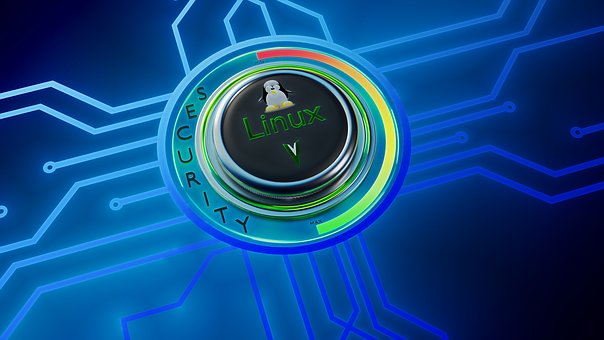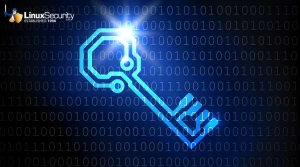Supercharging Linux: Tips & Tricks to Beat the Threat Landscape

Do you love Linux because of its user-friendly, exceptionally secure, heavy-duty, and open-source features that are easy to customize and maintain? If so, you’re not alone. It is no wonder Linux has captured the lion's share of the IT market.
Business leaders and IT decision-makers have poured their trust into Linux. ZDNet reports that 96.3% of the top web servers run on Linux. Unfortunately, attacks in network security on Linux are steadily rising as cybercriminals have come to recognize the OS as an increasingly viable attack target.This might seem far-fetched if you've always believed Linux is secure. But plenty of malware services target Linux machines, and some campaigns have gone under the radar for years, like Emotet's botnet, whose infrastructure is still being used in network security threats on Linux systems today despite being shut down in 2021.
Let’s examine your security as a Linux user and tips and tricks you can implement today to beat the threats targeting your systems.
Are Linux Security Components Really Secure?
Since its inception, Linux has been considered one of the most secure operating systems. Here are a few reasons why:
- Restricted access to root privileges: This reduces the threat landscape, as there are fewer chances of attacks in network security that can successfully steal stored data.
- Memory management: Linux has a well-defined memory management system that helps you keep your data and network security intact.
- Data integrity: Security-Enhanced Linux (SELinux) helps you protect data by isolating and segregating content.
These protocols were developed even before cybersecurity itself was clearly defined. However, cybersecurity and cybercriminals have come a long way. AI is here to help cybercriminals take down organizations cunningly, and IT teams must gear up with advanced network security toolkits that can evolve alongside AI technology. This shift can be seen with organizations moving from essential antivirus solutions to Endpoint Detection and Response (EDR), next-gen antivirus, and much more.
Let's explore why Linux is insecure and how you can fortify it and win the game against cybercriminals.
Decoding the Robust Privileges in Linux: Are Cybersecurity Vulnerabilities Still a Threat?
Privilege elevation cyber security vulnerabilities in Linux are rising, with network security threats like StackRot and Dirty Pipe creating a lot of noise in the IT world.
Dirty Pipe attacks in network security occur when a cybercriminal enters the network through brute force or credential abuse. They elevate privileges by installing malware and disabling your SELinux. The malware hides itself while expanding its presence through lateral movement across multiple payloads. Dirty Pipe has been added to the growing list of attacks targeting privilege-based cyber security vulnerabilities in Linux.
Dirty COW application security vulnerabilities, patched back in 2017, escalated privileges, giving the attacker root access, with which they could not only export data but misuse CPU and processing power, effectively executing a Denial of Service (DoS) attack, causing lags and outages.
Cybercriminals are using AI to develop cyber threats that can penetrate your network in creative ways that can be hard to anticipate. This is an issue since phishing attacks have grown more sophisticated than ever through AI.
The conventional attack pattern of installing binaries on a machine to allow for data exploits in cyber security is no longer a common practice. Cybercriminals are more careful now and can use AI more effectively to evade notice. Even if it's becoming harder to discover how a network security threat originates, you can implement the following proactive strategies to keep your company secure.
Visibility: Because You Can't Drive a Car Without a Windshield
Linux involves applications, configurations, credentials, services, and more like any OS. You can build a secure IT environment only when you have a clear picture of its boundaries and how they can help you protect your company with the latest cybersecurity trends.
Defining boundaries through privilege allocation and restrictions prevents mishaps from occurring through unauthenticated sessions. In addition, visibility will help you classify assets based on the risk level, and real-time insights will help you track your data better.
Security Always Starts with Patching
When it comes to keeping your machines safe, security patching is essential. However, IT administrators often do not efficiently utilize patching in cyber security to protect their machines. This is a result of the real-time challen ges admins face as opposed to having a negative opinion regarding patch management.
ges admins face as opposed to having a negative opinion regarding patch management.
Regardless, as the number of Linux exploits grows, IT admins can fall behind in security patching, resulting in cyber security vulnerabilities. On the other hand, IT admins deploy patches at breakneck speed without analyzing their compatibility, which can lead to a breakdown of their Linux services. So, machine patching in cyber security effectively is essential. Here is how:
- Automate your patch deployment: With new patches and cyber security vulnerabilities cropping up regularly, it is difficult to manually track them all, categorize them based on severity, and patch them accordingly. IT admins should embrace automation by drawing a workflow for the patch deployment process, using AI- and ML-enabled tools to help. Risk-based vulnerability assessment and patching can help you significantly reduce the possibility of attacks on network security.
- Validate your patches: Though timely deployment is imperative, it is equally essential to ensure that the machines don't stop functioning as a result. Sometimes, the patch installed will corrupt or damage your machine due to compatibility network security issues with the hardware. Therefore, before deploying your patches, validate if they suit your company’s environment. This eliminates possible downtime for your machines and maintains high productivity with no compromise in security.
- Customize your security patching deployment: Enabling flexible deployment will help IT teams patch their networks effectively. Creating separate windows for patches based on severity and environmental conditions can help form a basis for business use cases, yielding better results. Conditions include rebooting, deployment duration, file size, and timing.
All these efforts contribute to patch compliance, which indicates a secure network. These techniques can help you develop a proactive patch management strategy to stay on top of Linux cyber security vulnerabilities.
Securing Linux on the Fly?
Your security measures for Linux won't end here. There are a lot of use cases that cannot be covered with standard network security toolkits but can be facilitated by custom scripts. For instance, securing code repositories and CI/CD tools varies from business to business. When such ad-hoc cases are compiled, IT teams must do a lot of scripting to address their system's particular concerns. Unfortunately, not all IT admins excel at writing custom scripts, and relying on scripts from the internet is not the ideal solution. IT admins must use scripts from trusted parties for smooth and reliable performance.
Final Thoughts on Enhancing Linux Security
Linux is an integral part of many organizations' ecosystems, and it's up to business leaders and IT decision-makers to get the most out of it. In today's landscape, IT admins should keep Linux operations light and easy on the machines while keeping them secure and productive. Security protocols should blend seamlessly with user experience. To yield the best results, prioritize security and empower end users with productivity boosters.
The need for security doesn't stop with Linux, and it's the responsibility of an IT admin to keep their entire network security websites highly productive. Rather than loading your endpoints with dozens of agents, use a unified network security toolkit covering every use case.
ManageEngine Endpoint Central is a unified solution for your endpoint security and management operations. Endpoint Central empowers IT teams to build a secure environment, offering an elevated experience to end users. With Endpoint Central, you can manage and secure your Linux and all major operating systems. Try a 30-day free trial to build a secure and highly productive network security toolkit with Endpoint Central.
Ready to explore Endpoint Central? Get started today!





















